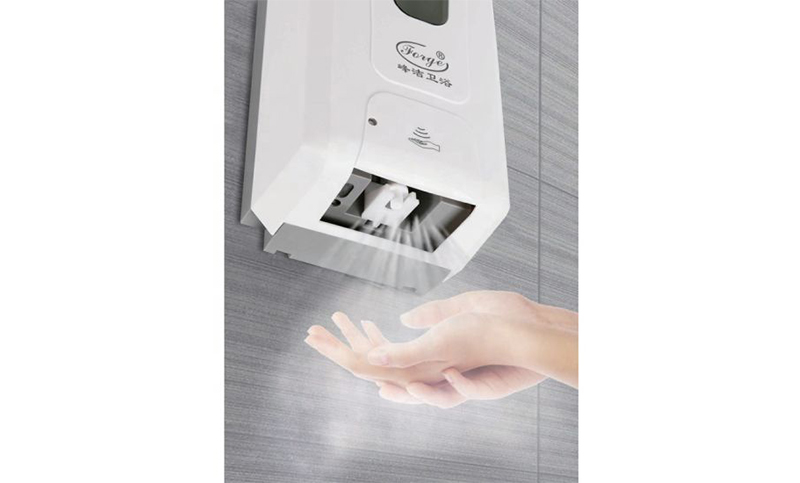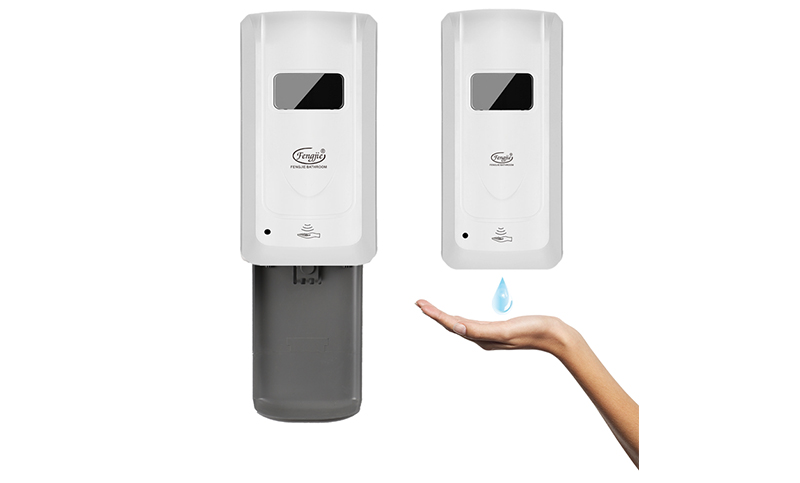
Since the coronavirus, disinfectants have also been found frequently in private households and are a must-have in the laboratory. But how do you choose the right auto dispenser hand sanitizer and what should be considered when using it?
Using auto dispenser hand sanitizer before and after door handling
To date, we know that the longest coronavirus lives on metal and plastic. As soon as we get home, the first thing we do is touch the doorknob with our hand, and, accordingly, bacteria remain on it. That is why the first thing we need to do is to sanitize the doorknob.
Washing hands and face
You need to wash your hands properly to get rid of not only infections, but also dirt on your hands. On average, people wash their hands for about 6 seconds, but this time is not enough for a thorough cleansing.
What is auto dispenser hand sanitizer?
Auto dispenser hand sanitizer is substances that have a microbicidal effect due to their chemical properties. That is, they kill microorganisms that cause diseases or infections. In contrast to sterilization, not all microorganisms eliminate, but only a certain variant of germs reduces and vital or non-pathogenic bacteria retain.
Since it always takes a specific population density of microorganisms to become infected, the reduction of germs using disinfectants is very effective.
A disinfectant should meet the following requirements:
- Reduce the number of germs quickly and comprehensively
- sufficient penetration depth
- resistant to organic material
- low systemic, toxic effect (not on the entire organism)
- Tolerance to skin, mucous membranes and open wounds
- long shelf life and biodegradable
Auto dispenser hand sanitizer Mode of action
When disinfectants act on microorganisms, they change the protein-containing structures of the organisms and thereby destroy them. Some disinfectants also damage the shell or the genetic information of the organisms. Other active ingredients lower the surface tension or inhibit the enzymes of the microorganisms.
With the same effectiveness, select the auto dispenser hand sanitizer according to the area of application in which the active ingredient is to introduce. In principle, only use disinfectants whose effectiveness against the microorganisms has been sufficiently proven.
Types of dispenser hand sanitizer according to area of application
Skin disinfectants
With hygienic hand disinfection, skin disinfectants come into dry hands. They usually contain alcohols such as ethanol or propanol. The aim is to render harmless germs that have come into contact with contaminated objects, among other things, on the surface of the skin. With germ inactivation, hygienic hand disinfection is more successful than just washing your hands.
In principle, hand disinfection should always take place in the laboratory if contamination of the hands with harmful microorganisms has occurred or is suspected. Regardless of this, hand disinfection is always necessary:
- at the start of work
- after every break
- when changing to the next higher purity range
- after the end of work
- after using a handkerchief
Instrument disinfectants
Here it is important to reach even the smallest depressions and holes. Consequently, it should be readily water-soluble and dry quickly or have a short exposure time. As a rule, disinfectants with caution-active substances are also common for this, or various halogens are good to use.
Best auto dispenser hand sanitizer
Auto dispenser hand sanitizer includes disinfecting by immersion. In the medical field, it is indispensable and part of everyday work. Instruments must reprocess with virucidal disinfectants if there is no subsequent sterilization.
Laboratory excursion: Laboratory equipment that has come into contact with infectious material or genetically modified organisms must be disinfected before further use or disposal ie put in a state that there is no longer any risk of infection. If necessary and the material is suitable, steam sterilization can then be carried out.
Surface disinfectant
Disinfection and hygiene plans specifically specify which we need to disinfect on routine basis. In the case of targeted surface disinfection measures, the type of pathogen is common in the majority of cases.
The required spectrum of activity can thus select depending on the microorganism to inactivated. Disinfectants that contain aldehydes, chloramines, cationic substances or per-compounds are particularly suitable for this.
How auto dispenser hand sanitizer help in disinfection?
Surface disinfection includes all disinfection measures on surfaces. You can use auto dispenser hand sanitizer. Without targeted surface disinfection, there is a risk that contamination will affect employees, measurement results and product quality.

When and where a disinfecting surface cleaning needs to carry out depends on whether the surfaces: are in frequent hand or skin contact, are surfaces in contact with the product and have been identified as potential weak points for possible contamination.
Wet wiping method:
The working solution supplies using cleaning cloths and then goes in, so that germs and impurities adhere to the surface loose by mechanical rubbing. The disinfecting agents reach the surface unhindered and any dust that may be present binds by the moisture.
Spray-wipe process:
In this process, alcohol-based rapid disinfectants spray specifically onto the surface to disinfect, which wipe immediately after application? You should make sure that it is complete wet. Alternatively: apply spray disinfectant directly to a dry cloth and completely wet the surface with it.
Disinfect - the right way!
Therefore, the correct implementation of auto dispenser hand sanitizer is essential. Disinfecting not only serves to protect people, such as medical staff or laboratory workers, it also helps to achieve scientifically correct results if test series and laboratory experiments carry out in a hygienic manner.
Water and soap attack the protective layer on the skin
Since last year, we advise to wash your hands thoroughly with soap and water as often as possible. This prevents the spread of possible viruses on the skin and would reduce the risk of a corona infection together.
Too much soap dries out
A normal frequency of hand washing is usually not harmful to the skin. However, if you wash your hands with soap very often during the day, the substances they contain dry out the skin quickly and lead to eczema.
Interesting insights into the work sanitizer dispenser
How do auto dispenser hand sanitizer work? Can anyone do the training? What persistent disinfection errors are there?
There are three big errors that are unfortunately ubiquitous. Many people believe that the term “disinfectant” is enough to kill viruses, bacteria and fungi. However, very few people know that there are different levels.




